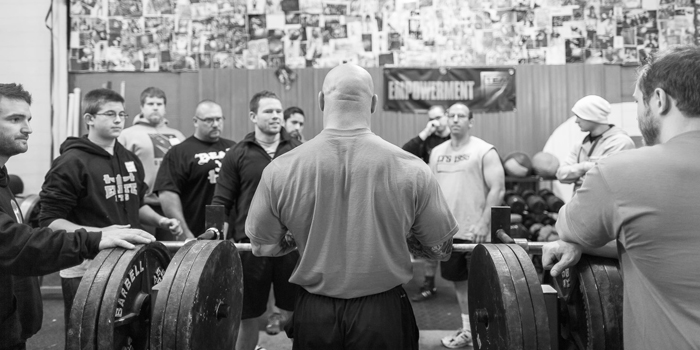
I think this might be the first article I ever had published. NOTE: Powerlifting USA is no longer printed. You can find rankings on Open Powerlifting.
By Dave Tate
Published - Late 90's - PLUSA
I just returned from a consulting engagement with a Division I football program. I was contracted to review and provide insight on their strength training program. This university had one of the best facilities I’ve ever seen. They must have had 15 power racks, 15 power bench racks, and 15 lifting platforms plus all of the latest machines and dumbbells that you would ever need. The first thing I thought was, “Man, you could really make a team strong here.” At least that is what I thought until I looked up at the wall. They had a list of standard goals to be met by each position. The linemen’s’ goals were to squat 500 lbs, bench press 385 lbs, incline press 325 lbs, and power clean 300 lbs. I was amazed at how low the numbers were for linemen who weigh between 260–300 lbs. But I thought at least they had standard goals for each of them to strive for. This was fine until I looked further down the wall and saw a chart for all of those who had reached this status. I stood in disbelief because there were none listed. Now, I was determined to figure out how this could be.
As I stood there in disbelief, I overheard two people passing by who were in town for a coaching conference. They were also very amazed at these numbers. I was about to comment when I learned that they were amazed for different reasons than I was. They thought the numbers were great! Now, I was beginning to wonder what was wrong with this picture. After some thought, I figured out what it was. People need to view strength for what it really is.
Strength training simply means the pursuit of being stronger. Somewhere down the line this theory has been lost. Many times there is too much emphasis placed on maintaining strength, not on creating it. How can two people look at the same board and one be amazed at how low the numbers are and another be amazed at how high they are? To answer this, we must look at what I call the personal paradigms of training.
A personal paradigm is the way one sees the world behind his own eyes. I heard this once explained using a map by Steven Covey, author of “The Seven Habits of Highly Effective People.” If you were to attend one of my seminars in Columbus, Ohio, and I sent you a map titled, “Columbus” but it really was a map of Detroit, Michigan, the first thing that would happen is you would get lost and backtrack to see if you missed a street. After getting lost again, you may give me a call. I would tell you to try harder and reread the map. You would reply, “I have read the map and can’t find the streets.” I would tell you to take your time and look at it more thoroughly. Well, you would head back out and once again get lost. This time you may head into a bookstore and buy the best motivational book on the market. Now, you would be all fired up, and you would head back out again only to get lost once more. You see, the problem is very simple. No matter how hard you try or how motivated you get, you still have the wrong map. Until you change your current map, you will be lost. Most coaches and lifters underestimate what strength really is because they have been using the wrong map or the wrong set of definitions and standards.
In the field of strength training, there really are no set definitions as to what expectable levels of strength are for individual athletes. The only definitions are the personal ones set by the lifters themselves, the trainer, or the coach. Let me explain further. Let’s assume that you decided to hire a personal trainer or coach to train you for your next competition. Your current lifts are a 700-lb squat, a 450- lb bench, and a 650-lb deadlift. Unless this trainer has processed a certain degree of strength himself, he may be impressed with your current level. How hard do you think you will be trained and on what level of knowledge is this program built? This trainer may only be able to bench 300 lbs and his best current client may only be able to bench 350 lbs. So to him your 450-lb bench is outstanding. This will make you feel great to receive all the praise from this trainer but will it help? Your current level of 450 lbs may be far under what you are really capable of doing.
One standard goal I believe in for the squat, bench, and deadlift for most power athletes and football players is the top 100 in Powerlifting USA. Now, I understand that not every athlete is a powerlifter or even wants to be, but I also feel a college or professional football athlete should be able to at least break into the top 100 or at least 100 lbs shy of it. Another standard for ranking squat and bench press strength is the strength ratings compiled by Dale Harder in his book, Strength & Speed Ratings, available from Crain’s Muscle World. (See the tables listed below.)
Keep one thing in mind about powerlifting and please don’t misunderstand my point. Powerlifting is a very small sport compared to others. It is filled with athletes who were not good enough to play football, basketball, baseball, or any other high profile sport past the high school level and those retired from those sports (past their prime). Yes, many lifters are suited for the sport but not as many as one might think. Take a close look at many of your top 100 lifters. Only a small percentage of powerlifters are suited for the sport. Most have average structure. This does not mean that powerlifters don’t train hard for what they have achieved. I believe they train harder and smarter than most coaches and trainers are currently training their athletes in terms of maximum strength development. Think about this for a minute, and you will see my point.
A Division I athlete has reached that level because of his genetic disposition and the hard work required to reach that level. These athletes are the cream of the crop or some of the best in the country. Now, why is it that these “best of the best” athletes can’t even come close to those powerlifters who were not regarded as the “best of the best” but as “past their prime?” Is it because the powerlifters have better facilities? Most train in garages, key clubs, and local gyms while Division I athletes train in multimillion dollar complexes complete with physical therapy centers and the best equipment money can buy. Better coaching? How many powerlifting coaches do you know? I can think of about ten. Now, how many strength coaches and trainers are there? There are about one or two strength coaches for every school, including high schools, and there are thousands of personal trainers.
Why the difference in strength? There are a few reasons I can think of, but the one that comes to mind is the comprehension level of strength. Powerlifters may think they are strong until they go to a local meet and find out they may not be as strong as they thought. So they head back to the gym and reevaluate their program and start back to work with a new definition of what strength is. Then when they build themselves up to a higher level and compete at their first national competition, they find out again that they still are not as strong as they thought and need to change their definition of what strength is. The best lifters are the ones who are always in a constant process of trying to push it up to the next level and who are always redefining themselves. If you listen to these lifters, you will almost never hear them say that they missed a lift because they were not strong enough. What you will hear them say is that the bar fell out of the groove, the equipment didn’t fit right, or they had one lagging muscle. But you will never hear them say they were not strong enough. Being stronger is a forgone conclusion and just a matter of putting it together. For a novice lifter, coach, or trainer, you will hear them say they weren’t strong enough or that they just don’t have the strength potential or genetics. There is never any new definition being made.
Another reason for the strength difference is many coaches and trainers feel that a 400-lb bench press and a 500-lb squat are unnecessary for sports performance. Is not all strength based on maximal strength? If you are spending time in the weight room, should that time not be devoted to getting stronger? Why spend valuable training time just maintaining? It makes no sense to go into the weight room to work on maintaining strength when the same time could be spent on developing strength. I do understand that there are many components of fitness when it comes to the total development of the athlete and that maximum strength is only one of them. A training program for a client or athlete based solely on maximum strength development is a major mistake. You must also address flexibility, endurance, mobility, agility, speed, and many other components. I believe these components need to be trained and are all affected by the total absolute strength that you have. In other words, all things being equal, the stronger athlete will win.
So how then can you change your definition of strength?
As a powerlifter, you must train with a group of other lifters. Having good training partners is a vital part of the process. Very few ever reach the top by themselves. You should try to get with a group of lifters who are stronger than yourself. This will reinforce the belief that it can be done when you see it being done time and time again in the gym. I used to feel a 600-lb bench was a big bench until eight people in our gym (Westside Barbell) did it. Now, it seems to be in reach for anybody who believes it can be done.
As a lifter, you must compete. Have you ever noticed that the biggest attitudes are held by those who only lift in the gym? These lifters believe they are the biggest and best out there. Why is it that the lifters who compete at the highest levels do not possess these same attitudes? I believe it is because to compete at this level they have all been humbled many times. They realize that there are many strong lifters out there and they are only one of them.
As a coach or trainer, you must workout. You would think this is a given, but it isn’t. There are many trainers and coaches out there who have the credentials on paper and wear them as well, but there are still far too many who only have credentials on paper. I wonder how you can teach strength if you have never possessed it in the first place. I overheard a top trainer giving training instructions to an 800-lb squatter on what he had t0 do to fix his technique. I would venture to guess that this trainer’s best squat ever is around 400 lbs. Having done an 800-lb squat, I can tell you there is a big difference in what you have to do to squat 800 lbs compared to 400 lbs. I am not saying that all strength coaches and trainers need to squat 800 lbs. This could not be further from the truth. But they should at least know what it feels like to lift maximal loads. I was always brought up with the belief to never ask someone to do what you would not do yourself.
A second point about this topic is the value of respect. You will gain greater respect from your client and coach if you are practicing what you preach. This is best done if you have the opportunity to train with the client or team. Let them see the intensity you put into your own training and you will get the same intensity back. Come to Westside Barbell and view the intensity of the training. You will notice that Louie is right in there banging away with us. Would that same intensity be there if he was not training? If you look at the recent success of Westside Barbell in the past five years, it directly relates to the time when Louie started his comeback. Think about it!
Check the Powerlifting USA top 100. As mentioned above, show your clients and athletes these lists. Let them know that they can reach the same strength level. Praise them for all personal records while encouraging and recognizing their potential to reach even higher goals. In comparison to the linemen’s goals at the beginning of the article, the last numbers on the top 100 for the 275-lb weight class last year were a 700-lb squat and a 507-lb bench. If this doesn’t inspire the athlete to strive for bigger numbers, let them know that the goals of a 500-lb squat and 385-lb bench would not even break the top 100 for the 165-lb weight class. With this in mind, are those goals solid goals for a lineman weighing 275–300 lbs in a four-year program?
Believe in yourself and act as if. This goes for both the powerlifter and the coach. If you tell them to act as if they are the strongest team in the league or if you act as if you are one of the top 10 powerlifters, you are on the right path. Act as if means do the same things they would do.
Do they spend time in the gym training on solid programs?
Do they research and read everything they can on strength?
Do they have a positive attitude?
Do they ever skip workouts?
Do they look to those who are better than them for guidance?
Do you?
Vince Lombardi once said, “I firmly believe that any man’s finest hour—his greatest fulfillment to all he holds dear—is that moment when he has worked his heart out for a good cause and lies exhausted on the field of battle victorious.” Do you want to lie on the ground victorious or with your face down in the dirt?










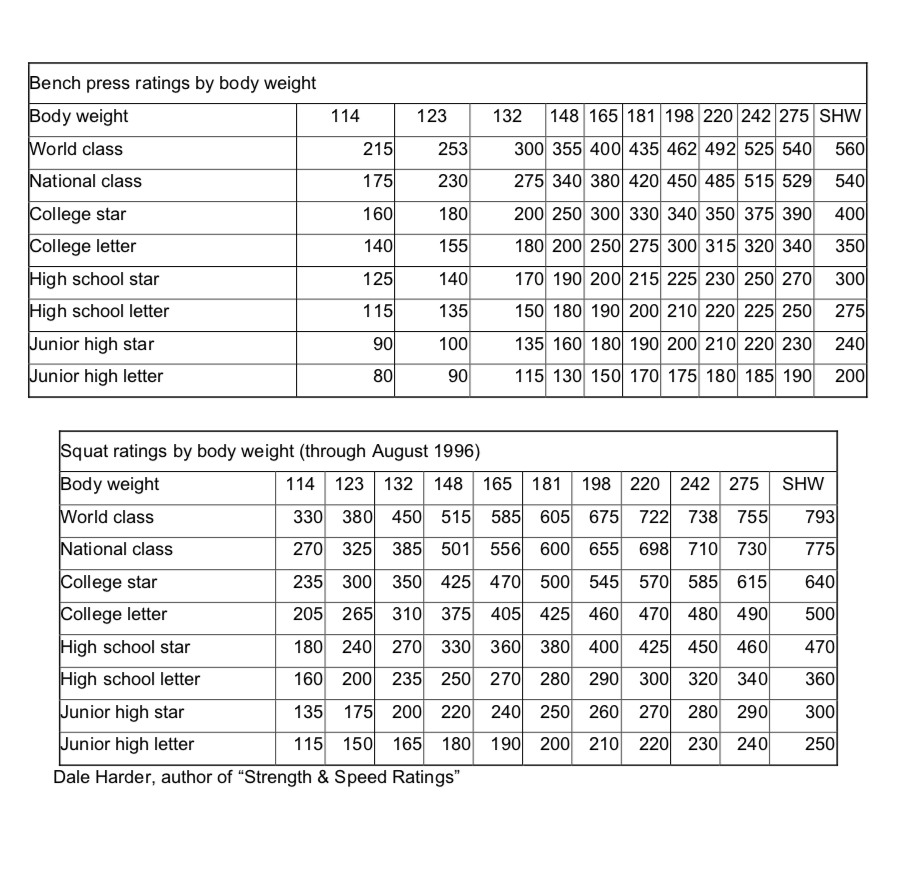
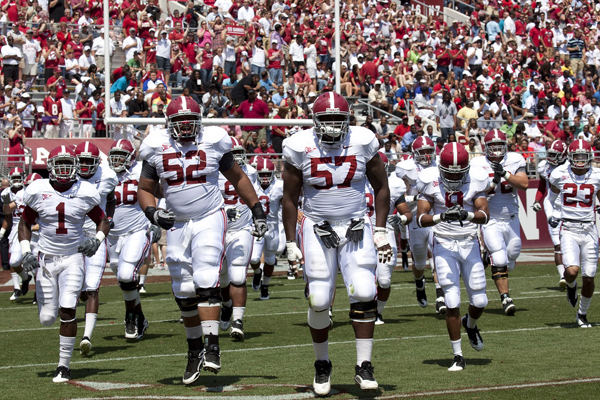
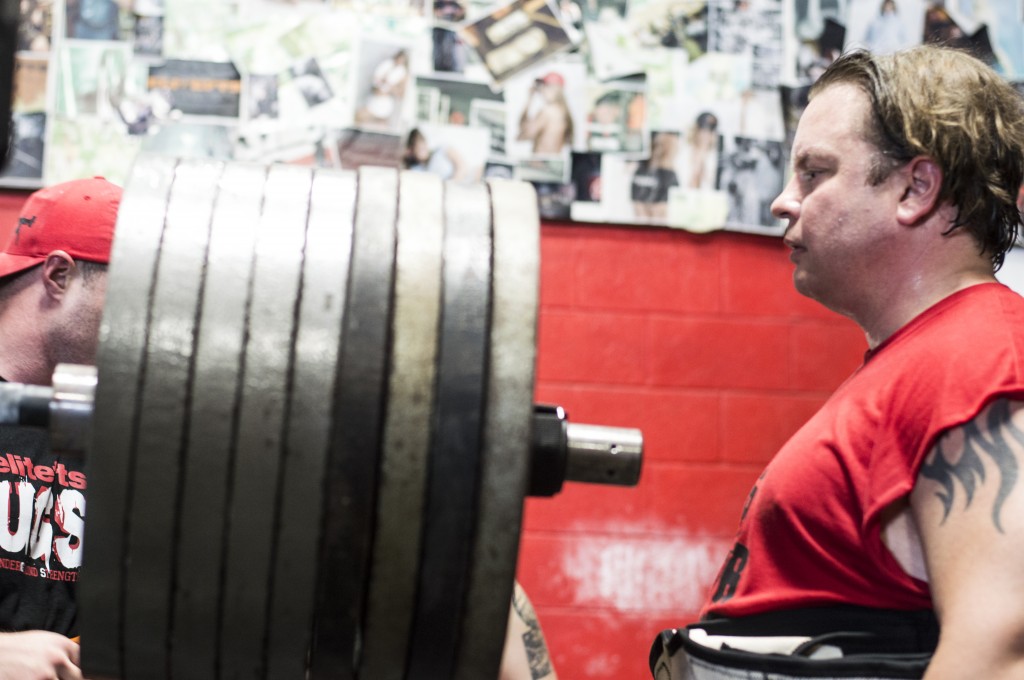
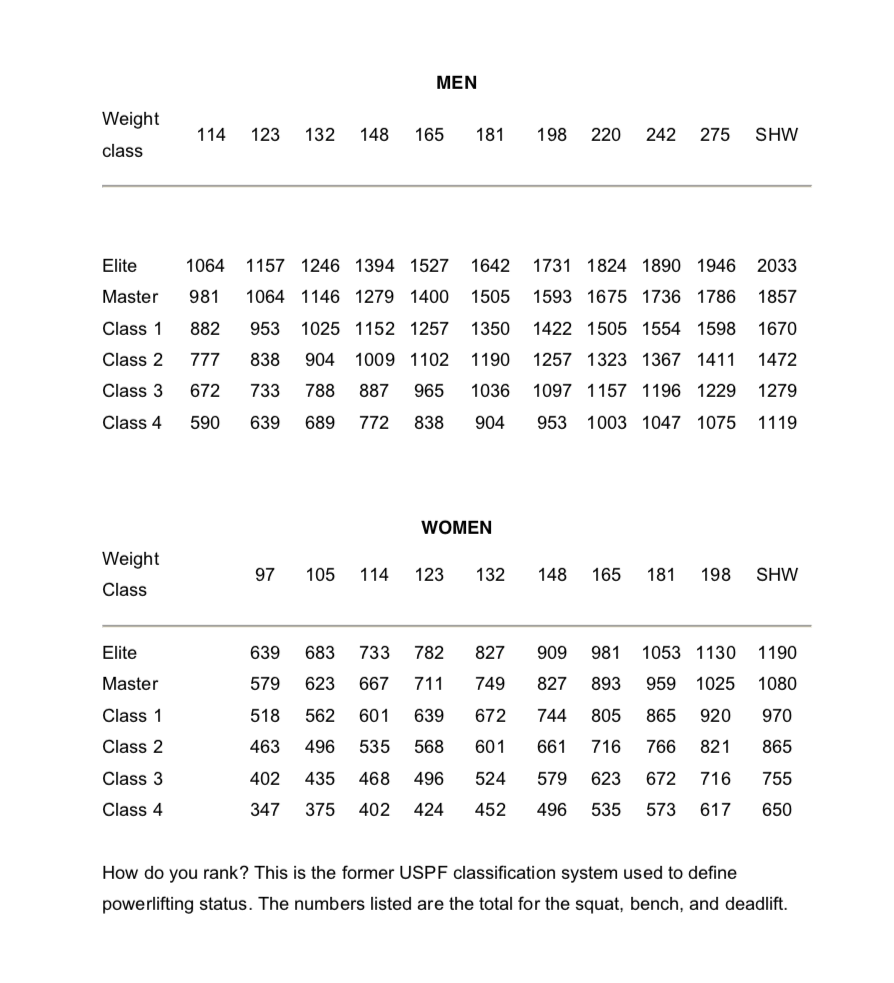

https://www.elitefts.com/coaching-logs/what-really-is-an-elite-powerlifter/